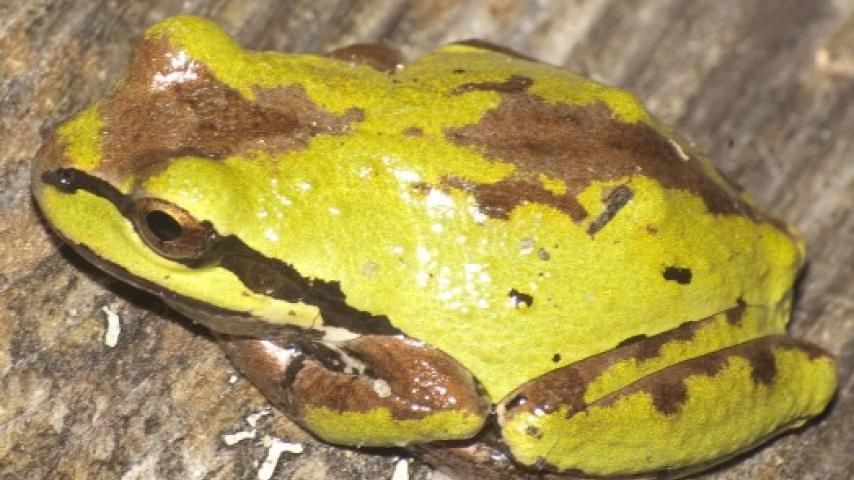Pacific Tree Frog (Pseudacris regilla)
This little frog (total length to 5 cm) is extremely variable in coloration. They can be mostly bright green, brown, tan, or even quite reddish, with or without a contrasty pattern of darker markings. Each frog is colored like this through life.

KINGDOM Animalia - PHYLUM Chordata - CLASS Amphibia - ORDER Anura - FAMILY Hylidae
One research study found that frogs tended to be in habitats that matched their coloration, but it was only a statistical tendency; plenty of frogs were found on substrates of inappropriate color!
Pacific Tree Frogs are associated with the wetlands in which they breed, but they may be found at some distance from them outside the breeding season. Although called tree frogs, they are not at all associated with trees, but live on the ground or up in herbaceous vegetation. They do have small pads on their toes like other tree frogs, and they can climb quite well among the plants.
Tree frogs are insect eaters, like most frogs, taking anything that will fit into their fairly large mouth. The tongue is flicked out and the prey captured on its sticky surface, then pulled back into the mouth for swallowing, along with soil, plant bits or other detritus.
The rib-bit call of this species is familiar to many because so many movies were made in Hollywood, where Pacific Tree Frogs are common; thus it is what many people think of as the typical frog call. This call can be called a song, as it defines a territory for a male and functions to attract females. It can be heard at any time of year, even proclaiming the roost site of males during the nonbreeding season. When temperatures warm sufficiently in early spring, males move toward wetlands and the real chorus begins. One male will start to call, then another will join in, then rib-bits resound in a cacophony of sound.
The calls attract females, and a male will clasp a female behind the front legs and ride on her back until she finds a suitable place to lay a cluster of 10-70 eggs. The male will then fertilize them. They will move and repeat this act several times. The eggs hatch in a few weeks, and the tadpoles grow rapidly and metamorphose into tiny frogs in a few months. Look for these froglets in marshy areas in midsummer.

